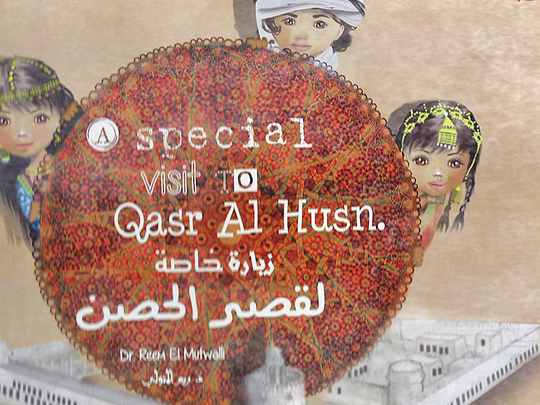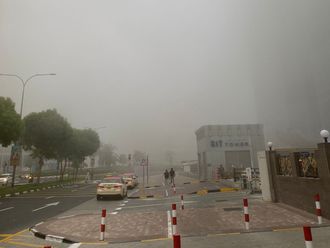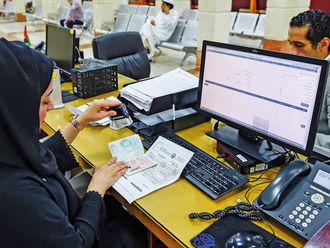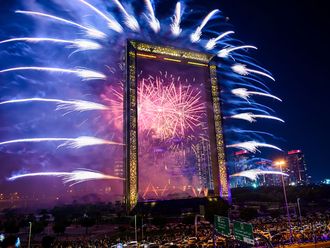
“Our ancestors left us a legacy of traditions which make us proud. Our mission is to preserve, develop and maintain it as an asset of this nation for generations to come.”
Shaikh Zayed Bin Sultan Al Nahyan
Abu Dhabi: His Highness Shaikh Mohammad Bin Rashid Al Maktoum, Vice-President and Prime Minister of the UAE and Ruler of Dubai, and General Shaikh Mohammad Bin Zayed Al Nahyan, Crown Prince of Abu Dhabi and Deputy Supreme Commander of the UAE Armed Forces, on Wednesday led the rally marking the start of the Qasr Al Hosn festival.
The Festival 2015, which will continue until February 21, features a rich cultural programme that is inspired by two themes: Abu Dhabi’s traditional heritage, which is epitomised by the iconic Qasr Al Hosn and its surrounding areas, besides the modern heritage of Abu Dhabi showcased in the Cultural Foundation Building. These two facets of Abu Dhabi’s heritage are on display at the festival through a variety of programmes and activities.
The interwoven landscape of festival grounds between these two landmarks will offer a variety of experiences for all ages to help them understand as well as celebrate the heritage of Abu Dhabi and the UAE.
Qasr Al Hosn, also known as the White Fort (originally not in white colour but painted bright white during the 1976–1983 renovations) was constructed as a conical watchtower to defend the only freshwater well on Abu Dhabi island.
The watchtower was later expanded into a small fort in 1793 by the then ruler, Shaikh Shakhbout Bin Diyab Al Nahyan, and became the permanent residence of the ruling Shaikh. The tower took its present shape after a major extension in the late 1930s, aided by revenues received from granting the first oil licence in Abu Dhabi. It remained the royal palace (hence the name Qasr Al Hosn, meaning palace fort) and seat of government until 1966.
This long and colourful history has been captured in a new book for children titled A Special Visit to Qasr Al Hosn, written in Arabic and English by historian Dr Reem Tarek Al Mutwalli — author of the very well-known book Qasr Al Hosn — where she chronicled the storied history of the architectural centrepiece of the nation’s capital.
In her new book about Qasr Al Hosn, Dr Reem takes us on a tour through the fort that was constructed in 1793. It was the time when the seat of the government was moved from Liwa Oasis to Abu Dhabi Island.
After centuries of hosting royalty, the fort came under the stewardship of Dr Reem who became one of the privileged few to hold the fort’s keys after she took up work at the Culture Foundation in Abu Dhabi in 1984. She kept the fort’s keys in her official capacity for two decades.
Dr Reem recalls: “It was like holding a segment of a time when glory and greatness went hand in hand to pave the way to the present. I worked there from 1984-2000 and was very fortunate to be able to have access to the fort and its keys.”
She conducted a full survey on all of Abu Dhabi’s forts as part of her master’s degree in Islamic art, architecture and archaeology at the School of Oriental and African Studies at the University of London, publishing the first architectural survey on the fort, Qasr Al Hosn, in 1995.
Dr Reem recently wrote four children’s books inspired by life in the UAE, and while she drew from her surroundings to create the characters, it was the close collaboration with Shaikha Shamma Bint Sultan Bin Khalifa Al Nahyan, she says, that helped her immensely.
Shaikha Shamma, Dr Reem says, is “a wonderful spirit,” whose professionalism and maturity belie her young age. “When I first mentioned my project to her, she immediately sent me the right resources from books that are core to such a subject,” she said.
“She has published a children’s book and I drew from her experience to guide me in my path.” What began with an e-mail correspondence soon grew into a partnership that saw Shaikha Shamma immerse herself in the endeavour.
“As I looked for role models to base my characters on, I was inspired by Shaikh Hamdan Bin Mohammad Bin Rashid Al Maktoum, Crown Prince of Dubai, and his niece Sheema.”
“Hazza” she added, “the young boy in my Reemiyat series, is based on [Faz3], who is Shaikh Hamdan, with all his traits: courage, love for exploration and adventure, and a hunger for learning.
“Sheema in Reemiyat is based on Sheema, Shaikh Hamdan’s niece in real life, and she is a clever, inquisitive, responsible and patriotic young girl and an avid reader. The third and youngest of the three characters is based on the lady who was instrumental in making this series a reality — Shaikha Shamma Bint Sultan Bin Khalifa Al Nahyan, the granddaughter of President His Highness Shaikh Khalifa Bin Zayed Al Nahyan. She is quiet but productive, kind, motivated, sweet and has a great love for humans as well as animals.
“A Special Visit To Qasr Al Hosn is based on my books Qasr Al Hosn, An Architectural Survey (1995, 2014), and Sultani, Traditions Renewed, [to highlight] traditional UAE women’s dress during the reign of the late Shaikh Zayed Bin Sultan Al Nahyan.”
Since she wanted the characters to come to life, Dr Reem experimented with different dollmakers and, harnessing the power of the internet, worked with five dollmakers from around the world: USA, Portugal, Holland, Germany and UAE.
As a result, the book is accompanied by dolls, puzzles, games, and puppets that bring the whole story alive for youngsters, thus bringing them closer to their heritage.










